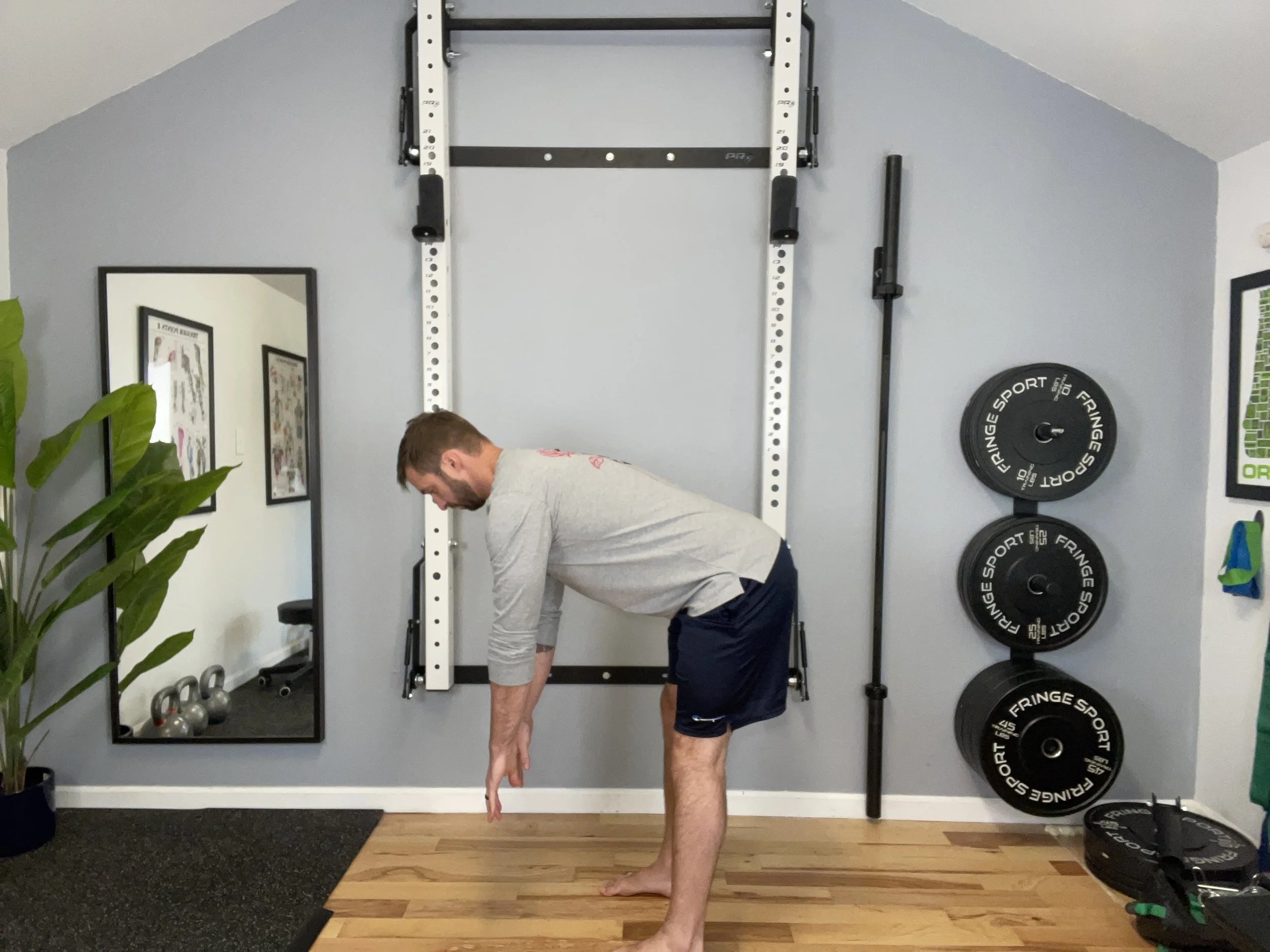How To Hip Hinge For Less Lower Back Pain
The hip hinge is the most important movement for adults to learn to solve back and knee pain. Not only is the hip hinge a movement that we use everyday (bending forward, lifting, sitting, etc.), it is also the foundation for many other strength movements that we’ll use to treat joint pain. This article will teach you how to hip hinge for less joint pain and arthritis.
How To Hip Hinge Without Stressing Your Joints
For such a simple movement, there is a lot to think about when performing this movement. Follow these step-by-step instructions to learn the basics. Then keep reading to learn how to fix common mistakes and learn new variations. To perform the hip hinge:
Start with feet hip width apart and loose knees (not locked out).
Perform a an abdominal brace to control any spinal movement.
Initiate the movement by reaching your hips towards the wall behind you.
Allow your knees to bend without actively bending them (don't squat).
Keep a neutral spine (placing a pole on your back is a good reminder).
Stop the movementment the second you feel tension in your hamstrings.
Bring hips back to the starting position and repeat.
Learn How To Perform The Perfect Hip Hinge With Dr. Baird In The Video Below
Common Hip Hinge Mistakes And How To Fix Them
For such a simple movement there is a lot that can go wrong when performing the hip hinge. Having taught this move to 100's of adults over the last ten years I've seen it all. I've compiled the most common mistakes people make when learning to perform the the movement:
Bending Your Trunk Forward vs. Reaching Hips Back
This movement is about sending our hips BACK and not bending our trunk FORWARD. While both are technically hinging, bending forward changes our center of gravity and leads to more tension in the low back when we start to add any weights.
Hinging Too Low
Stop your hinge the minute you feel tension in your hamstrings. You will be able to go lower but all that movement will be happening in your lower back which can (and will) lead to pain and dysfunction over time.
Too Much Knee Bend
The hinge can easily turn into a squat if we're not careful. Both great movements but with two different purposes Keeping your knees loose will allow your knees to bend as you reach your hips back. But be careful not to actively bend them as this will turn the movement into a squat.
Too Much Spinal Movement
This is more of a problem for people with the flexible body type. Overextending in our mid back adds more impact on out spine and can lead to pain. Fix this issue by maintaining an abdominal brace throughout the movement.
Too Much Pelvis Movement
Don't initiate the movement by rocking your pelvis forward. This creates too much extension in the lower back and lead to pain (you'll feel this one). Maintaining a simple abdominal brace also helps control this pelvic movement as well.
Hip Hinge Variations
Once you’ve mastered the hip hinge, you can further challenge yourself with different hinge variations. Here are just a few more fun ways to practice the hinge to build strength and protect your joints. .
Weighted Hip Hinge
Build strength in your hip hinge by holding a weight in front of you. To get the most out of the movement keep the arms relaxed (it's not an arm workout!). Allow the weight to pull you down while you send your hips back.
Elevated Kettlebell Lift
Use your hip hinge to practice lifting weight, and building strength, from the ground. Starting on an elevated surface helps further ingrain our hinging movement pattern and transition into lifting from the ground.
Single Leg Deadlift
The single leg deadlift is an advanced hip hinge variation that teaches you to hinge on a single leg. It adds a nice balance, single leg strength, and strength challenge to our hinging movement.
The Kettlebell Swing
You read that right, the kettlebell swing uses the hip hinge for a more metabolically challenging workout. I love kettlebell swings and incoporate them into most of my workouts, but it's important that you have mastered the movement to avoid injury with this exercise.
Learning how to hip hinge is the best way to limit impact on your joints for less overall joint pain. Mastering the movement takes practice and repetitions. Use this guide to get started and be sure to download my free strength program below.
Learning, understanding, and practicing the hip hinge is just one of many ways to limit the impact that goes through our body and help solve years of joint pain. For a more complete understanding and answers to joint pain be sure to download our free program ‘Solving Pain With Strength’.







